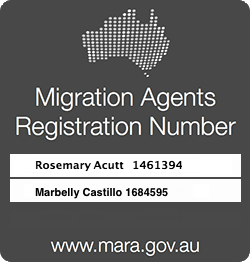To apply for this visa, you must hold a valid passport from a country involved in the Working Holiday Program with Australia. Eligible countries are:
- Belgium
- Canada
- Republic of Cyprus
- Denmark
- Estonia
- Finland
- France
- Germany
- Hong Kong Special Administrative Region of the People’s Republic of China
- Republic of Ireland
- Italy
- Japan
- Republic of Korea
- Malta
- Netherlands
- Norway
- Sweden
- Taiwan (other than an official or diplomatic passport)
- The United Kingdom of Great Britain and Northern Ireland (including British National Overseas passport holders)
You might be eligible to renew this visa for a second year if you:
- have complied with all the conditions on your first Working Holiday visa
- have not previously held more than one Working Holiday visa
- have completed three months of specified work in a regional Australia while on your first Working Holiday visa.
Specified Work
To apply for a second Working Holiday visa, you must have already completed three months of specified work in a regional Australia. This specified work must have been completed while on your first Working Holiday visa.
Specified work is work that is undertaken in a ‘specified’ field or industry in a designated regional area.
An example of approved industries for specified work includes but is not limited to:
- plant and animal cultivation
- fishing and pearling
- tree farming and felling
- mining
- construction.
Please contact our office should you wish to discuss examples of specified work.
How to calculate specified work
‘Three months’ means three ‘calendar’ months or 88 days. Work can be either:
- in one block with one business
- in separate blocks with one business or a number of businesses. Blocks of work may be in different kinds of specified work.
One full day of work is defined as having worked the minimum number of hours considered to be a standard day by the particular industry in which the applicant is employed. Generally, the Australian working week is 35 to 40 hours, consisting of seven to eight hours of work each day. Individual employers can not set a smaller period of time than the industry standard to satisfy the specified work requirement.
In calculating the period of time for which the applicant has undertaken specified work, the type of employment relationship the applicant may have with their employer, including full/part time employment, casual employment or voluntary employment, is not as important as whether the relevant industry considers the period of work completed to be equivalent to full time work for that industry. For example, if the applicant’s paid employment involved two weeks on and then two weeks off, and this is standard practice in the industry, the applicant would be considered to have worked for four weeks (28 days). If the employer is satisfied that the applicant has undertaken the equivalent of full time work for that industry for the specified period, the visa decision maker may be satisfied that the applicant has undertaken full time work for the specified period.
Applicants whose work is equivalent to full time employment may count weekends in the 88 day period. However, if the applicant’s work is not equivalent to full time employment, for example, part time or casual, they may only count the full days actually worked.
In circumstances where the applicant is employed by more than one employer at the same time, they may only count each calendar day of work completed once towards their 88 day specified work requirement.
The shortest period that may be counted towards the specified work requirement is one day of full time work (for that industry). Applicants cannot count a long day of work as more than one day of specified work. For example, if the industry’s standard day is six hours long, working a 12 hour day does not count as two days of specified work.
Full time workers can count sick days only during periods where they were in paid employment and entitled to sick leave or covered by a workers compensation scheme. In these situations, supporting evidence must be provided by the employer.
Applicants who were prevented from obtaining employment because of injury or seasonal circumstances cannot count any time they were unable to work towards the three month period. For example, cyclones interrupting harvest activities.
Some possible examples to help clarify the definition of three months of specified work are outlined below.
Examples that meet the three month requirement
- Working week
Working on a farm for three months for five days each week, where the industry standard is five days a week of full time work. - Shift work
Employed as a miner for three months and under the employment contract are only required to work every second week, which is the standard full time contract for the industry. - Blocks of work
Completing 60 days of harvest work, followed by a period of travel for two months. Then completing another 28 days in construction, bringing the total days worked to 88 days. - Sick days
Employed for a three month period but take several days of sick leave during the period.
Examples that do not meet the three month requirement
- Working week
When five days of work a week is the industry standard on a farm, but the applicant only works four days a week for three months. - Work done on another visa type
Completing three months of specified work during the summer break while on a Student visa. - Seasonal circumstances
Picking bananas for 80 days on a casual basis, but the applicant cannot find more work as there is a cyclone and their first Working Holiday visa ceases




